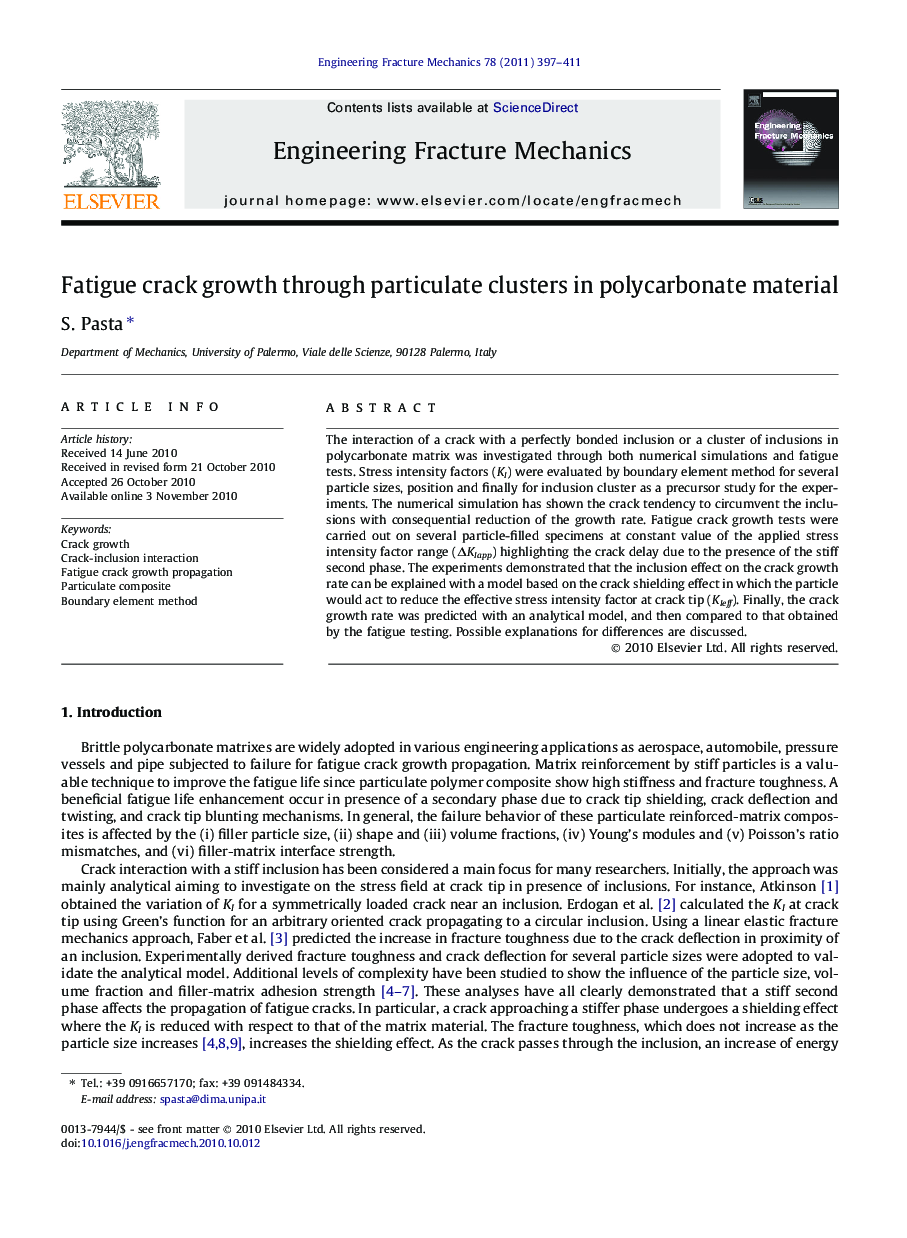| Article ID | Journal | Published Year | Pages | File Type |
|---|---|---|---|---|
| 770785 | Engineering Fracture Mechanics | 2011 | 15 Pages |
The interaction of a crack with a perfectly bonded inclusion or a cluster of inclusions in polycarbonate matrix was investigated through both numerical simulations and fatigue tests. Stress intensity factors (KI) were evaluated by boundary element method for several particle sizes, position and finally for inclusion cluster as a precursor study for the experiments. The numerical simulation has shown the crack tendency to circumvent the inclusions with consequential reduction of the growth rate. Fatigue crack growth tests were carried out on several particle-filled specimens at constant value of the applied stress intensity factor range (ΔKIapp) highlighting the crack delay due to the presence of the stiff second phase. The experiments demonstrated that the inclusion effect on the crack growth rate can be explained with a model based on the crack shielding effect in which the particle would act to reduce the effective stress intensity factor at crack tip (KIeff). Finally, the crack growth rate was predicted with an analytical model, and then compared to that obtained by the fatigue testing. Possible explanations for differences are discussed.
